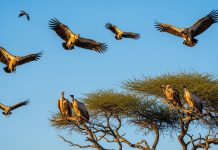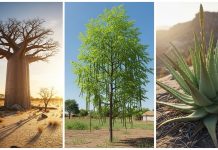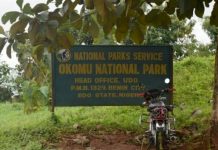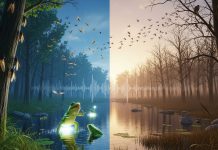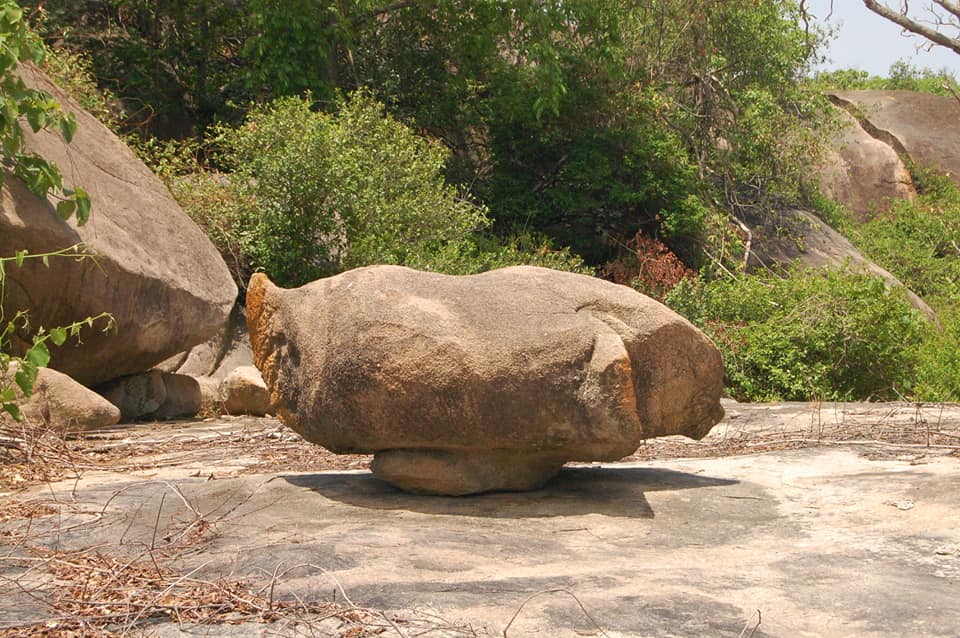Old Oyo was one of the significant pre-colonial empires in Nigeria, and this historical park makes Nigeria one of the most attractive countries for tourists. The park is named after the old town of Oyo-Ile, which was the political capital of the Oyo Empire from the 16th to 18th centuries. As a result, visitors can explore a rich mix of archaeological, cultural, and historical interests. The park covers an area of 2,512 square kilometres (970 sq mi) and is located in the northern part of Oyo State and the southern part of Kwara State, making it an area rich in wildlife and cultural attractions.
The park spans eleven local government areas, ten of which are in Oyo State, with the remaining one in Kwara State. This location makes the park easily accessible from many southwestern and northwestern Nigeria areas. The administrative head office is situated at Isokun, Oyo, along the Oyo-Iseyin road, where visitors can find an information desk and a booking section to obtain necessary information and make reservations. The well-maintained gardens and organised areas make the park attractive, with wildlife such as buffaloes, bushbucks, and many species of birds.
The park is surrounded by other towns, including Saki, Iseyin, Igboho, Sepeteri, Tede, Kishi, and Igbeti, where commercial and tourism opportunities abound. This makes OLD OYO NATIONAL PARK a unique centre for tourism, combining natural beauty and historical significance unmatched by other parks in Nigeria.
Overview
Old Oyo National Park is one of the largest and most biogeographically diverse national parks in Nigeria, covering nearly 2,512 square kilometres in southwestern Nigeria. The park is located in the northern part of Oyo State and the southern part of Kwara State, and it is endowed with natural and historical sights as well as diverse wildlife.
Geographic Location
Located between the coordinates of 8° 15’ 0” N and 9° 00’ 0” N, and 3° 35’ 0” E and 4° 42’ 0” E, Old Oyo National Park occupies a region of multiple terrains. It is bounded by eleven local government areas, ten of which are in Oyo State, with the remaining one in Kwara State. This unique geographic location makes the park one of a kind, where a wide variety of ecological features coexist with cultural values.
Landscape and Natural Features
The landscape of Old Oyo National Park is predominantly composed of lowland plains, rivers, granite outcrops, and rocky hills, each contributing to the park’s distinct topography.
- Lowland Plains: Similar to many other parks in Nigeria, the relief is relatively low, with almost 90% of the park featuring gently undulating plains along the valleys of the Ogun River. These plains provide fertile ground for vegetation and support a wide range of wildlife.
- Rivers: The park is home to the Ogun River, which passes through its valleys, along with other rivers such as the Owu, Owe, and Tessi. These rivers provide essential water sources for the park’s plant and animal life and host diverse aquatic organisms.
- Granite Outcrops and Rock Formations: In the northeastern region of the park, dark red to greenish granites form rugged outcrops near the archaeological zone of Oyo-Ile. The geographical centre of the park features scattered hills, ridges, and numerous rock formations. The northern area, with its caves and rock shelters, holds geological significance within the park.
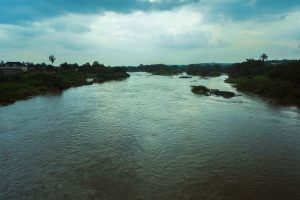
A Brief History
Origins as Forest Reserves
Old Oyo National Park, has its origins in two forest reserves established during the colonial period: Upper Ogun Forest Reserve, established in 1936, and Oyo-Ile Forest Reserve, in 1941. These reserves were created for the conservation of the area’s key species and are considered the initial steps toward environmental conservation.
Transition to Game Reserves
In 1952, due to the significant natural and cultural importance of these areas, the Nigerian government upgraded the forest reserves to game reserves. This transition aimed to protect the wildlife in these areas from extinction due to hunting and habitat loss. The game reserves provided shelter to various forms of life, thereby enhancing the conservation of the area’s natural resources.
Formation of Old Oyo National Park
In 1991, the game reserves were officially merged and converted into national parks under Decree 36, which also established four other national parks in the country. This marked the legal formation of Old Oyo National Park, intending to preserve the area’s natural and historical systems.
Current Landscape and Features
Currently, Old Oyo National Park covers an area of 2,512 square kilometres and spans 11 local government areas. The park features diverse habitats, including woodland, savanna woodland, outcrop vegetation, and riparian grasslands. These habitats support a wide variety of plant and animal species, including endangered species like the painted hunting dog and the western kob.
In addition to its scenic beauty, the park holds historical significance, being home to the site of the ancient city of Oyo-Ile, once the political capital of the Oyo Empire. The park’s amenities include game viewing tracks, a mini museum, and guided tours to historical and political sites.
Ecological Diversity
Old Oyo National Park is not only an exciting ecological destination but also a place rich in cultural diversity.
Flora
The park boasts a variety of plant species that form the foundation of its ecological system. The terrain is characterized by low and gently rolling relief, with vegetation primarily consisting of Guinea savanna. This includes open wooded lands, grass plains, and sparse stands of trees, particularly along watercourses. These plants provide essential food and shelter for the park’s fauna. Notable tree and shrub species include Isoberlinia doka and Terminalia spp., which thrive in savannah, montane, and coastal regions. Other species such as Chisgiokea parviflora, Piliostigma thonningii, Vadulia madagascariensis, and Afzelia africana contribute to the park’s biodiversity. These plants not only enhance the park’s aesthetic appeal but also play crucial roles in supporting both herbivores and carnivores.
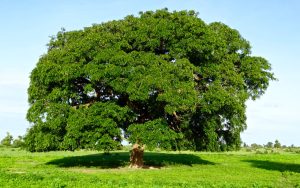
Fauna
The park is home to a rich variety of fauna, including numerous mammals, birds, reptiles, and amphibians. Key mammalian species include:
- African Buffalo (Syncerus caffer): Large herbivores common in the park, they have a significant impact on the vegetation due to their grazing.
- Kob (Kobus kob): This antelope species is often seen in the grasslands and open areas, feeding on the abundant grass.
- Bushbuck (Tragelaphus scriptus): These nocturnal antelopes inhabit the park’s thorny acacia shrubs and riverine forests.
- Roan Antelope (Hippotragus equinus): A large and powerful species, the Roan Antelope prefers the wooded savanna.
- Western Hartebeest (Alcelaphus buselaphus): These herbivores are mostly found in the open grasslands, grazing on the grasses.
- Patas Monkey (Erythrocebus patas): Known for their speed, these ground-dwelling monkeys inhabit the savanna woodlands, though they are not as common.
- Waterbuck (Kobus ellipsiprymnus): Often seen near water sources, these animals prefer habitats close to rivers and lakes.
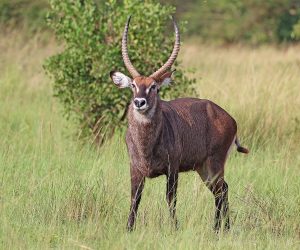
The park once hosted the West African wild dog (Lycaon pictus manguensis), a species that has since disappeared due to hunting and human settlement expansion, highlighting the challenges of wildlife conservation.
Avifauna
Old Oyo National Park is also rich in avian fauna, providing a sanctuary for many bird species. The diverse terrains, including Acacia savanna, miombo woodlands, open grasslands, and riverine forests, offer ideal breeding grounds and refuges for both resident and migratory birds. Species like the African grey hornbill, Abyssinian ground hornbill, various sunbirds, and kingfishers make the park a significant birding destination.
Rivers and Water Bodies
The park is traversed by several rivers, including the Ogun, Owu, and Owe rivers. These rivers create riparian belts that differ markedly from the surrounding landscape in terms of vegetation and wildlife. They are crucial water sources, especially during the dry season, and play an integral role in the park’s ecology.
Visitor Experience
Old Oyo National Park is unique for its diverse wildlife, historical sites, and cultural points worth visiting. Here’s what you can expect during your visit:
Southern Park Area: Fauna & Tourism
In the southern sector of the park, you may spot animals such as Nile crocodiles, rock pythons, lions, antelopes, and buffaloes. IKERE Gorge Lake is suitable for sports fishing and boat rentals for cruising. The best time to visit is from October to early April during the dry season when animals congregate around water sources.
Northern Park Area: History & Archaeology
The northern area of the park is a significant historical and archaeological reserve. You can explore the ancient city walls of Oyo Ile, Agbaku Hills with Stone Age relics, Kosomonu Hill, and the old AKesan market. The Alaafin’s Palaces and ancient pottery offer insights into the Oyo Empire’s past. Birdwatching enthusiasts will be pleased to find over thirty bird species in this area.
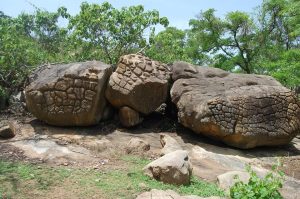
Central Park Area: Landscape & Climbing
The central zone of the park is ideal for climbing and offers breathtaking views. Here, you can experience diverse natural resources, including wild buffaloes and bushbucks.
Cultural and Mystical Sites
Oyo-Ile hosts 22 historical sites, including the Alaafin Palace and Songo Shrine. The Ogun Jokoro, a mystical piece of armour and an artefact of the Yoruba people, is a notable feature of the park.
Local Communities
Nearby local centres such as Saki, Iseyin, and Igboho offer a glimpse into local life, as they are cultural and trading hubs.
Old Oyo National Park is one of Nigeria’s historical parks, offering a rich blend of natural landscapes and cultural experiences, making it a recommended destination for visitors.
Challenges and Conservation Outlook
Challenges
Illegal Activities
- Poaching: Although poaching has decreased since the early 2000s, it remains a significant problem. Further efforts are needed to prevent a resurgence of this issue.
- Logging: In the Tede, Sepeteri, and Oyo-Ile religious ranges of the forest, illegal logging distorts the ecosystem.
- Illegal Herding: Poachers often cannot differentiate park boundaries, leading to overgrazing and habitat destruction.
Environmental Factors
- Climate Change: Global warming has forced nomadic livestock keepers to encroach on the park, destroying natural habitats.
- Logging: Ongoing illegal logging continues to fuel deforestation and undermine ecosystems.
Community Relations
- Limited Involvement: The local community has no input in park management and lacks knowledge about the park’s status, leading to impaired conservation efforts.
- Awareness Issues: Many people living near the park are unaware of its regulations and thus infringe upon park rules.
Other Threats
- Hunting and Grazing: These activities, along with honey tapping, pose threats to the park across all its ranges.
- Fishing: While regulated in the Oyo-Ile range, uncontrolled fishing in other areas can have dire consequences for aquatic life.
Efficiency Challenges
- Resource Diversity: The park’s diverse resource base complicates the measurement of conservation achievements. Therefore, appropriate monitoring strategies are needed.
Conservation Outlook
- Enhancing Anti-Poaching Efforts: Encourage governments to strengthen and sustain anti-poaching measures to aid animal conservation.
- Combating Illegal Logging: Enforce regulations and ensure sustainable practices to prevent further forest loss.
- Addressing Climate Change: Utilize wildlife corridors and educate inhabitants about climate change effects to aid adaptation.
- Improving Community Engagement: Increase local participation in park management and educate the community on the park’s importance.
- Promoting Sustainable Practices: Support selective and sustainable hunting, grazing, and honey tapping, and promote incentives for eco-friendly products.
- Strengthening Monitoring and Evaluation: Develop specific monitoring frameworks to enhance the evaluation of conservation strategies.
Final Note
Old Oyo National Park is a fascinating blend of history and nature in Nigeria, representing a unique intersection of the country’s heritage and its diverse environmental conditions. Covering an area of 2,512 km² in Oyo and Kwara states, the park offers visitors a rich tapestry of ecosystems and historical significance. It features lowland plains, ancient rocks, vital rivers, and historical ruins that reflect the nation’s past. However, the park faces challenges such as poaching, illegal deforestation, and climate change, which threaten its delicate balance. Addressing these issues requires improved conservation strategies, increased community involvement, and sustainable practices to preserve Old Oyo’s beauty for future generations.


